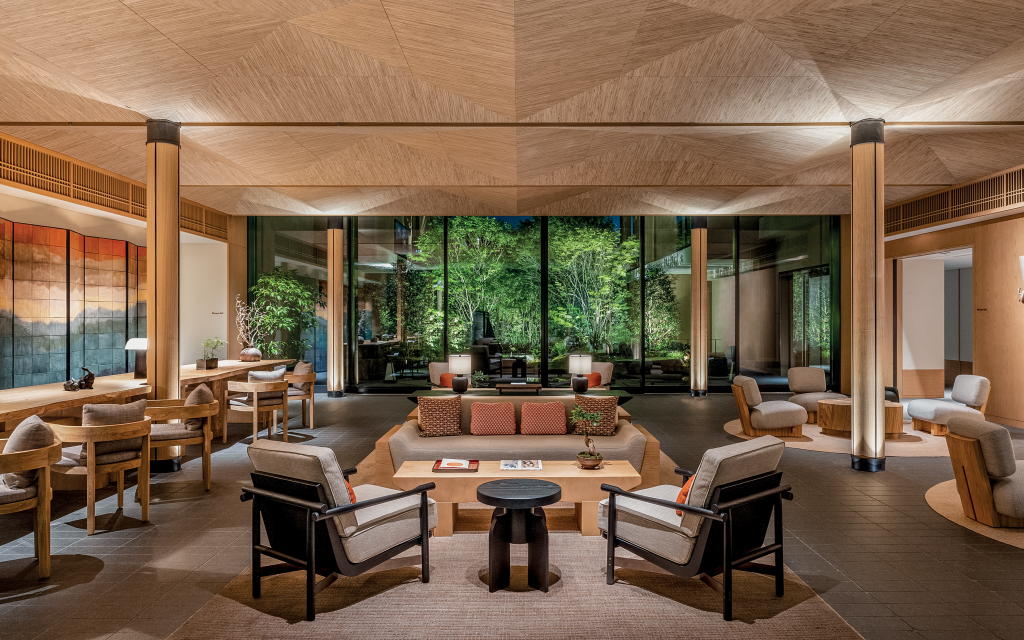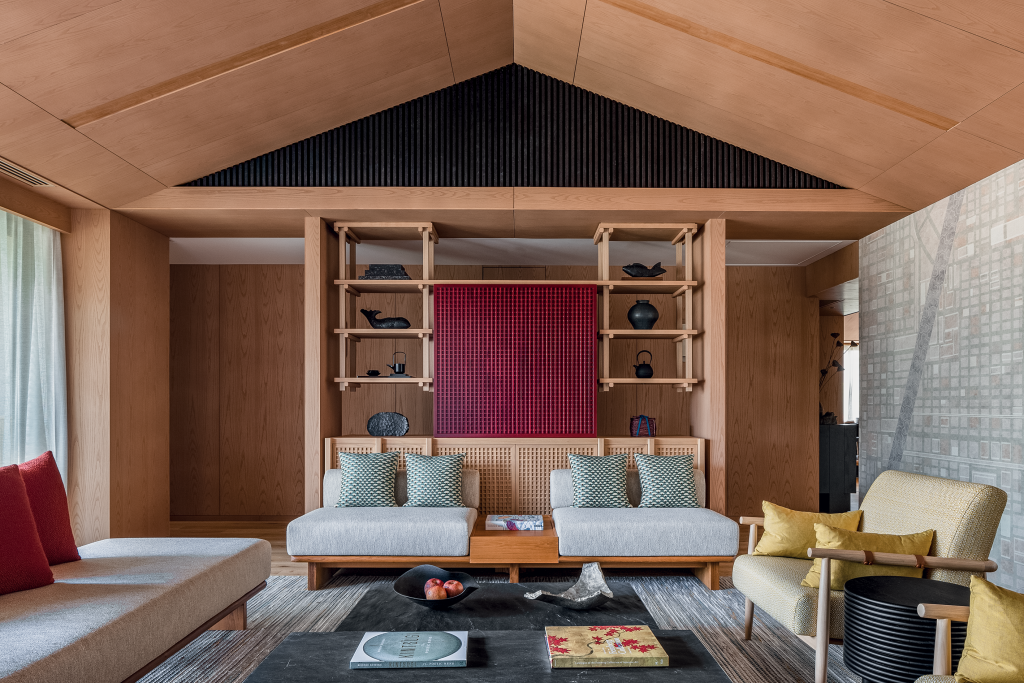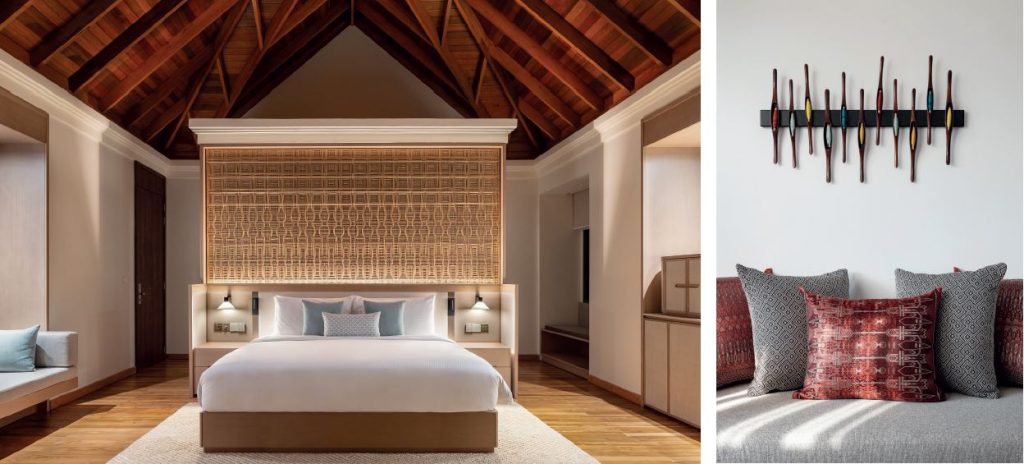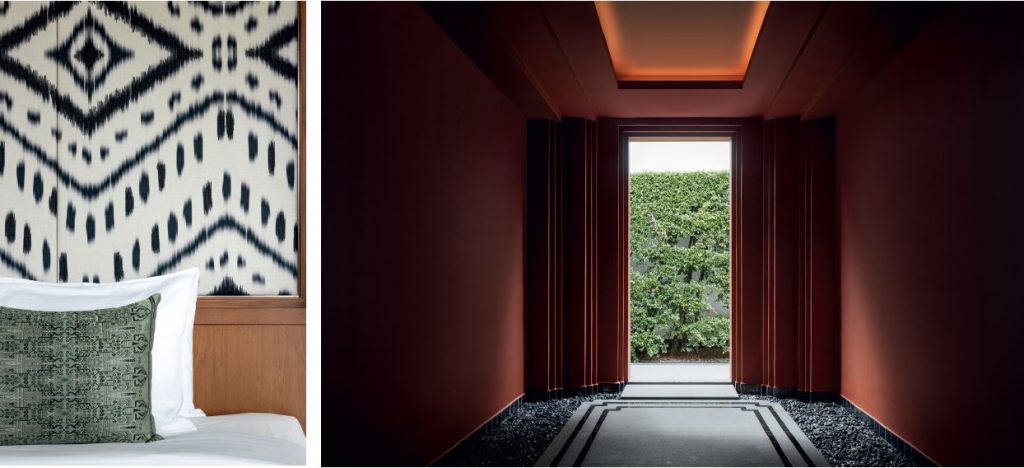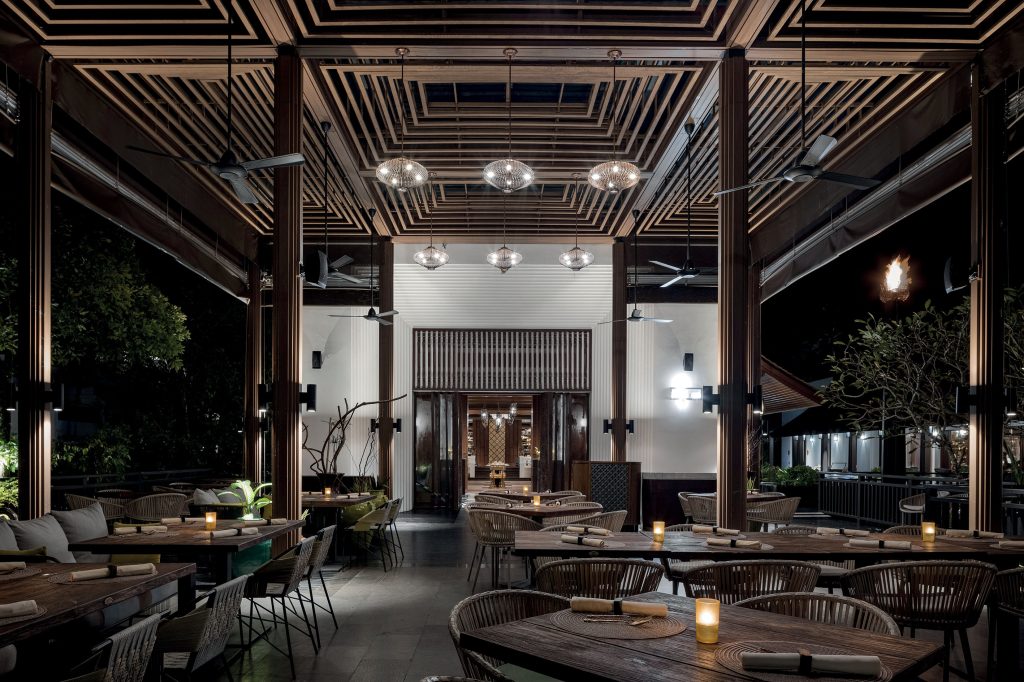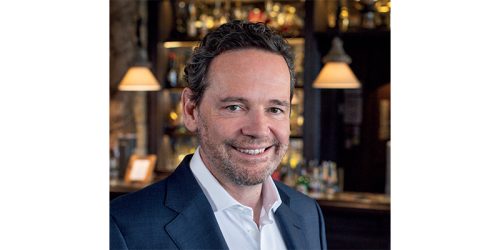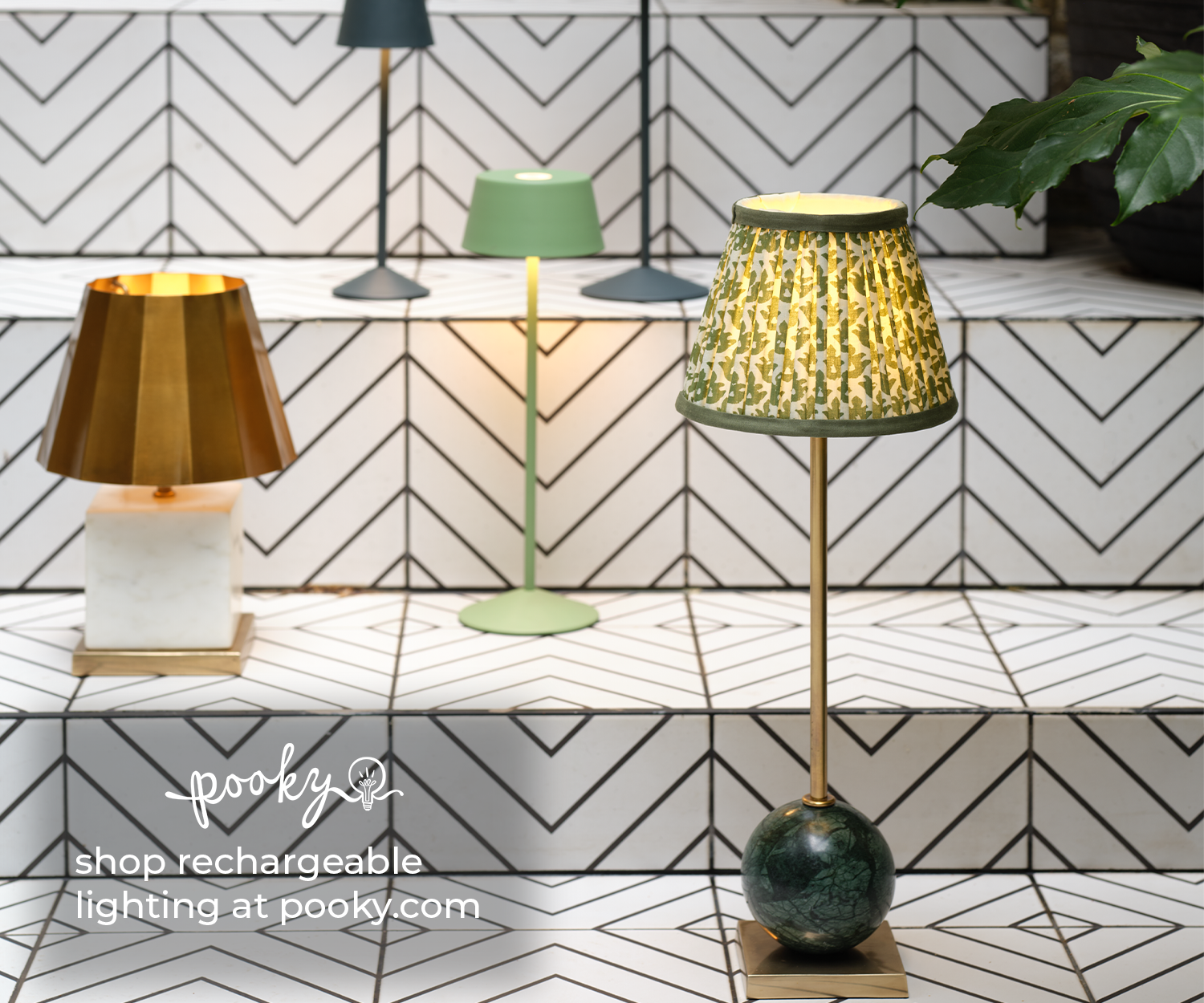Clint Nagata, Founder and Creative Partner, Blink Design Group
A visionary in luxury hospitality design, Clint Nagata blends authenticity, refinement, and a deep sense of place to create timeless spaces around the world. 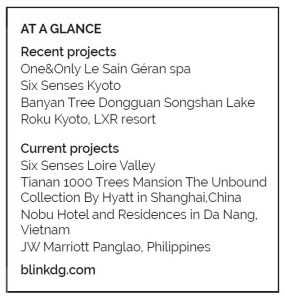
Few places understand hospitality quite like Hawaii, where Clint Nagata was born and raised. When exploring a career in design, hospitality was the natural path for him to channel his creative talents. Today, BLINK Design Group, has studios in Bangkok, Shanghai, Singapore, and Dubai, bringing its signature sense of quiet luxury to many of the world’s leading brands. With a portfolio that includes One&Only, Six Senses, Banyan Tree, and Raffles, BLINK is now preparing to expand into Europe. As the firm embarks on this next chapter, Clint shares his insights on the art of timeless design.
Fresh off the plane from Bangkok, Clint is as relaxed as his interiors. Dressed head-to-toe in cream, he blends in perfectly with the surroundings – an elegant suite at 1Hotel Mayfair. Although not responsible for the interiors, the understated simplicity of the setting chimes with the BLINK aesthetic. However, as lovely as the hotel is, I’m not entirely convinced a city break is the sole purpose of Clints visit. “No,” he smiles. “We are actually here because we’re hoping to set up a London studio. There’s an amazing amount of talent here, certain skill sets that we can’t get elsewhere – furniture designers, industrial designers – and now that we have projects in Europe, it would make sense to have a base in this part of the world.”
One such project is Six Senses Loire Valley with the transformation of a château, slated to open in 2027. Having recently completed Six Senses Kyoto, he’s clearly enjoying the switch of continents and the opportunity to bring his vision to a forest setting in the heart of France. “It’s a stunning site with a rich history,” he says, before explaining that due to the Loire’s strategic location and countless châteaux, it has long served as a refuge for artworks during times of conflict.
“So, it has this extraordinary heritage,” he continues, “which, when combined with the forest, nature, and the Six Senses brand, creates a cohesive design. We always try to design spaces that are of a particular place and moment in time, and here, everything naturally came together.”
Looking through BLINK’s portfolio, it’s hard to find a project that doesn’t inspire a deep sigh – followed by an even deeper desire to be there. Wellness seems second nature to Clint, effortlessly woven into each space without any silent but firm instructions to RELAX – a personal fear of mine when staying anywhere with a focus on wellbeing. I wonder how he achieves this.
“It’s funny, as a team we were recently trying to verbalise our aesthetic,” he begins. “It’s a little like a consommé. We take all these big ideas and distil them – and then just keep refining them down. It sometimes takes time for new designers to adjust and find their rhythm with us. We often see designs that are just too busy, so we’ll say, ‘OK, that’s great, but you need to take away about 30% of the detail.’ It’s about getting to that point of refinement, where the design ethos is much clearer and simpler than perhaps another firm would do. But in addition to that, as designers, we have to consider each space from a user’s perspective.”
“What do we want guests to feel when they’re sitting in that room? It’s about capturing that emotion and translating it into a physical space. Ultimately, while we design for the guest, it’s shaped by our own preferences, which we then have to convey through design.” Gesturing around the room, he continues, “Take this space, for example. Every detail is intentional, like the texture of the sofa. Its roughness subtly connects us to nature. As designers, this intuition comes naturally, but it’s our job to bring it to life in the design, to make it feel like a wellness property.”
Every designer has a different starting point when it comes to projects, and I assume this understanding of guests’ needs is the BLINK approach.
“No, it starts with understanding the place before we even arrive. But just as important is understanding our clients – what’s their background, why they’re building the hotel, what they like and don’t like. There’s a bit of ‘spy work’ involved in figuring out who the audience is from the client’s perspective and how that drives the design.
“That said, what technology can’t replace is actually being on-site. From the moment you step off the plane, the drive to the hotel, and what you experience along the way – that journey matters. Then stepping out and opening the door – what do you see? What can I smell? All of it shapes that feeling of arrival.”
BLINK’s projects sit quietly at the top of hospitality design, exuding a curated sense of comfort. There is an honesty in the absence of ostentation, with spaces that feel textured and quietly sculptural. Pattern appears through natural materials – a slice of rough stone, the rich grain of wood, or the shifting shadows of a latticework screen. Colour, though present, is used sparingly, and artworks remain deeply connected to their surroundings. For those drawn to the ever-growing wellness market, they are the pinnacle of refined tranquillity and pared-back luxury, which leads to my next question.
“I think my definition of luxury is about personalisation,” he tells me. “It might be the smallest thing, luxurious simply because I have a personal connection to it. It’s not something that’s ‘in your face’ or ‘bright and glary’ – for me, that’s never going to be luxury. It’s something that looks timeless and can be appreciated for what it is, something that will last.”
Given that definition, I think it’s safe to say following a trend is not something the studio would want to be associated with.
“Absolutely not,” he agrees. “The tricky thing about designing a hotel is that you are often designing something five years ahead of opening, and you then want it to last for at least another ten years before renovation. If it’s too trendy, then it will be out of date before it even opens.”
It all looks so effortless, and I ask Clint if he always knew he would be a designer. Smiling, he shakes his head.
“No, not really, but I knew it would be something on the artistic side. When I was still at school and needed to decide what to study, I looked at what an artist, a graphic designer and an architect earned and soon figured out I’d be better off being an architect!”
After earning his degree in Architecture, Clint joined Wimberly Allison Tong & Goo (WATG) in Honolulu, marking the start of his journey into hospitality design. “I grew up in Hawaii, which is essentially one big resort,” he explains. “The chilled lifestyle, a deep appreciation for the outdoors, and the art of hospitality were all second nature to me. But it wasn’t until I saw the WATG ad in the local newspaper – looking for ‘creative individuals’ – that I made the connection.”
Joining as a junior and working his way up to partner, he took on projects in Asia, sparking a love affair with a continent he would soon call home.
Now based in Bangkok, where he launched BLINK in 2006, I ask him why he chose to settle there. He pauses, considering the question before answering.
“You know, Hawaii is one of the most isolated places you can possibly live, and from that perspective, I think I always felt out of place. I’m from a very small town – where I believe there’s still just one set of traffic lights!” he laughs. “So, I always knew I wanted to travel. When I first went to Bangkok, I felt a familiarity with my Japanese heritage, and I fell in love with the Asian culture.”
Nineteen years on, he still considers it a great place to come home to. “It’s not perfect – things are broken – but there are always ways to get around it. That’s one thing I’ve learned about the Thais: their perspective on life is quite different. They tend to see the bright side of things. They’re very creative and open to different ideas and collaborations, which is very inspiring for a design firm.”
With a burgeoning portfolio, more than 20 projects in development and the imminent opening of a London base, I don’t feel the need to ask Clint what lies behind the secret of BLINK’s success. Instead, I’m interested in how he feels about the many awards that I imagine fight for pole position in his studio.
He smiles modestly before answering. “Awards are interesting. From a business perspective, it’s hard to ignore the power of marketing and social awareness – it’s obviously important. But at the same time, I want the work to speak for itself. While awards may not be my personal focus, I completely understand their value when I see the excitement and pride they bring to the team – or ‘The Blinkers,’ as I like to call them. Their achievements deserve recognition, and it’s also a great opportunity for the hotels, attracting press and, ultimately, more guests.”
Listening to Clint speak about his work, one thing becomes apparent: design, for him, is as much about emotion as it is about aesthetics. It’s about how a space feels, how it connects with its surroundings, and how it stands the test of time. And perhaps that’s the real secret behind BLINK’s success: a deep understanding that true luxury is never forced, it simply is.




